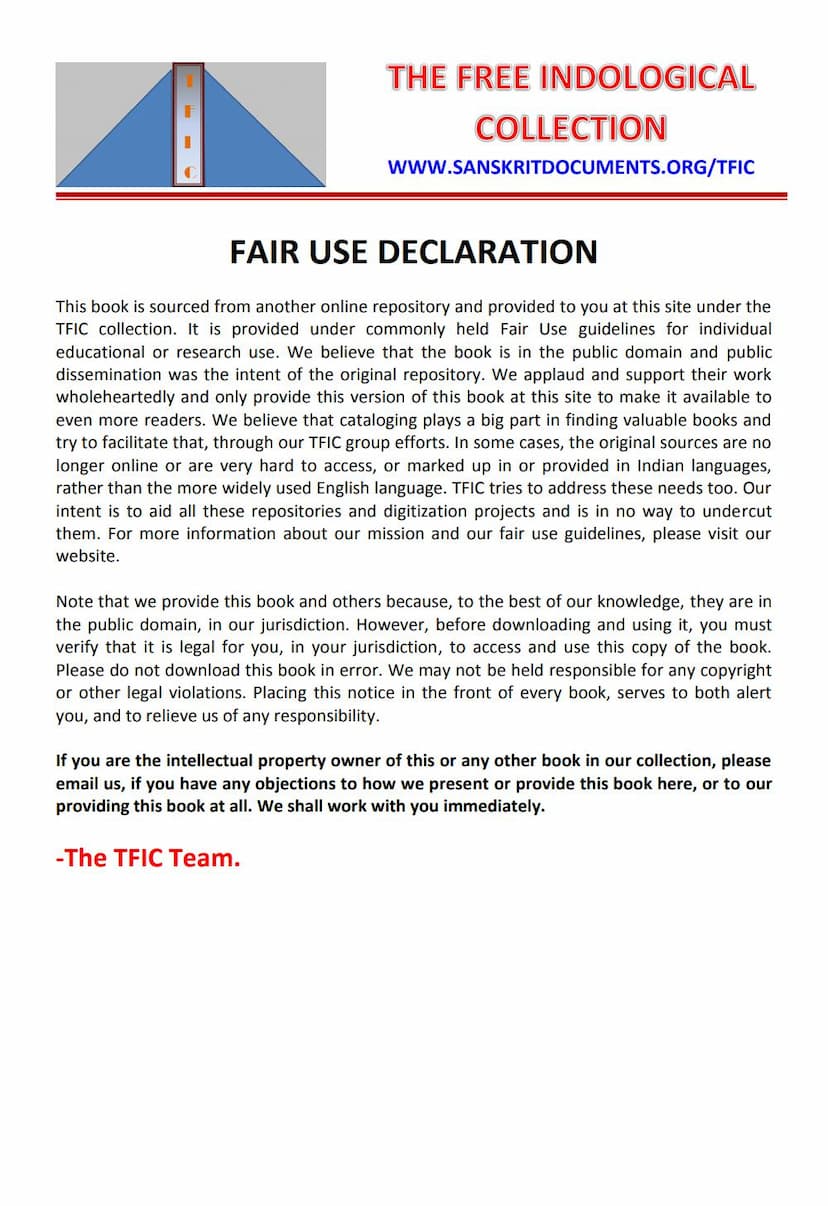Tattvartha Prashnottara Dipika 01
Added to library: September 2, 2025

Summary
This is a comprehensive summary of the Jain text "Tattvartha Prashnottara Dipika 01" by Shankarlal D Kapadia, based on the provided pages:
Book Title: Tattvartha Prashnottara Dipika 01 Author: Shankarlal D Kapadia Publisher: Shankarlal Dahyabhai Kapadia Ahmedabad
Overall Purpose: The book, "Tattvartha Prashnottara Dipika 01," is presented as the first part of the "Kantitatvajnan Series." It is a question-and-answer (Prashnottara) based commentary on the foundational Jain text, the "Tattvarthasutra" by Lord Umasvati. The aim of this book is to make the profound teachings of the Tattvarthasutra accessible and easy to understand for a wider audience, particularly for younger students of Jain philosophy. It strives to clarify the core tenets of Jainism in a systematic and engaging manner.
Key Themes and Content (Based on the provided excerpts):
- Foundation in Tattvarthasutra: The book is a direct elucidation of the Tattvarthasutra, a universally accepted scripture within all Jain sects. It emphasizes the Tattvarthasutra's significance as a concise summary of Jain philosophy, covering essential principles of soul, non-soul, karma, liberation, and the path to it.
- Question-and-Answer Format: The "Prashnottara" format is central to the book. It breaks down complex philosophical concepts into digestible questions and clear, explanatory answers. This pedagogical approach is designed to engage the reader and facilitate learning.
- Accessibility: The author, Shankarlal D Kapadia, was motivated to create this work because he felt that existing commentaries on the Tattvarthasutra (like Pandit Sukhlalji's detailed exposition) were primarily suited for advanced scholars. He aimed to bridge this gap and make the teachings available to a broader audience, including beginners.
- Scope (Volume 1): The initial volume, as per the excerpts, covers the first five chapters of the Tattvarthasutra. Each chapter's content is briefly outlined, showcasing the progression of topics.
- Chapter 1: Focuses on knowledge (Jnana) in its various forms (mati, shruta, avadhi, manahparyaya, kevala), the nature of knowledge, the instruments of knowledge (pramana and naya), and the categorization of knowledge. It also introduces the concepts of naya and pramana, explaining their distinct roles.
- Chapter 2: Delves into the nature of the soul (Jiva), its characteristics, the cycle of transmigration, and the various classifications of living beings based on senses, lifespan, and other attributes. It also discusses the concept of the five bhavas (states of the soul) and the different types of bodies.
- Chapters 3 & 4: Detail the cosmology of Jainism, describing the different realms of existence, including the hellish realms (Naraka) and the celestial realms (Deva). This includes their geographical descriptions, the life and suffering of beings in Naraka, and the various types of heavens and their inhabitants.
- Chapter 5: Explores the nature of non-soul (Ajiva) entities, focusing on the fundamental categories of Ajiva: dharma, adharma, akasha, pudgala, and kala. It explains their definitions, functions, and characteristics, particularly emphasizing the scientific and philosophical depth of Jain cosmology, even touching upon concepts like atomism.
- Core Jain Principles: Throughout the chapters, the book explains fundamental Jain concepts such as:
- Saptatva: The seven realities (Jiva, Ajiva, Asrava, Bandha, Samvara, Nirjara, Moksha).
- Naya and Pramana: The principles of perspective and valid knowledge.
- Five Types of Knowledge (Jnana): Mati, Shruta, Avadhi, Manahparyaya, and Kevala.
- Cosmology: The structure of the universe, including the different Lokas (regions), Meru mountain, and the abodes of hellish beings and celestial beings.
- Karma: Though not explicitly detailed in these excerpts, the context implies the discussion of karma as a central element leading to the cycle of birth and death.
- Liberation (Moksha): The ultimate goal of Jainism, achieved through the path of Right Faith, Right Knowledge, and Right Conduct (Ratnatraya).
- The Author's Personal Journey: The "Nivedan" section reveals the author's personal motivation. He was inspired to undertake this work after observing the educational needs of young girls in a Jain pathshala. His personal experience of teaching and his desire to simplify complex Jain texts led him to this endeavor. He expresses gratitude to individuals who supported his work.
- Importance of Tattvarthasutra: The book highlights the Tattvarthasutra's unique position as a text accepted by all Jain sects, making it an ideal starting point for understanding Jainism.
- Slight Discrepancies and Corrections: The "Shuddhipatraka" (errata) indicates the author's commitment to accuracy, acknowledging potential errors and corrections.
- Fair Use Declaration: The inclusion of a Fair Use Declaration from "The Free Indological Collection" suggests the book might be a digitized version of an older publication, emphasizing its availability for educational and research purposes.
In Essence: "Tattvartha Prashnottara Dipika 01" is an educational resource designed to demystify the Tattvarthasutra. It uses a clear question-and-answer format to explain the core philosophical, cosmological, and ethical principles of Jainism, making them accessible to a broad audience and fostering deeper understanding and appreciation of Jain teachings.